On the wine trail in Tunisia
Despite being a Muslim country, Tunisia has been producing wine for more than 2000 years
When you think of countries with a notable wine culture, Tunisia is not likely to come to mind. Being a Muslim country, you’d perhaps assume that it is technically dry, and wine absent from its heritage.
Not a bit of it: being a relatively modern and liberal country, alcohol is completely legal. Furthermore, some citizens of this North African republic clearly have a taste for alcohol - beer sales here are the highest per capita within the Arab world.
That’s not to say Tunisians have fully embraced booze: many Tunisians view alcohol consumption as immoral. Licensed bars and restaurants generally either cater for the luxury and tourist markets, or are conversely mired within the sleazier, rougher sphere.
I visited Tunisia to check out part of a new wine route, the Magon Trail, the result of an EU-backed Sicilian-Tunisian joint initiative, the first time a Muslim country has created an itinerary inspired by the culture of wine as a joint root of Mediterranean identity. With the World Tourism Organisation citing food and wine tourism being on the rise, it has been hoped that this initiative would boost tourism. There’s a way to go, as organised wine tours inspired by the route have come and gone, none becoming especially established as yet.
The Magon Trail consists of a tour of archaeological sites of Phoenician and Punic origin, as well as vineyards across Tunisia and Sicily. The route was named after the Carthaginian agronomist Magon, regarded as the father of viticulture, whose works were translated from Punic to Latin and quoted by later Roman writers such as Columella.
Wine production in Tunisia was probably introduced by the Phoenicians when Carthage was established, and continued after the Romans occupied Carthage in 146 BC. The first wines to emerge were rose, because they took much less time to produce than reds. After Tunisia's conquest by Arabs in the 8th century AD, wine production significantly reduced.
More recently, production slumped in the last century following independence, nationalisation and the resulting departure of European expertise. Re-privatisation of vineyards has resulted in the industry picking up again in recent years, although the terrorist attacks in 2015 (the mass shootings at Sousse and the Bardo Museum), and the Jasmine Revolution in 2011 inspiring the Arab Spring, were a huge setback for Tunisia’s wine industry as tourists had been the principal consumers.
Today, more than 75,000 acres of vineyards remain in Tunisia, with half of these dedicated to winemaking. More than half of the wines produced are rose, with about a third being reds and less than 10 per cent white wines. Most of the wine is consumed domestically, although the country’s winemakers are keen for change.
A good place to start an exploration of Tunisian wine is at the Bardo Museum in the capital, Tunis, which contains a world-renowned collection of Roman mosaics that includes magnificent murals of Dionysian and Bacchic scenes.
The country’s wine heritage can be seen all around in this impressive museum, for example a host of ancient wine vessels and Roman mosaics showing people making and drinking wine.
The Bardo has both huge wine containers, made from recovered fragments pieced together, and small vessels too. There’s a wine ‘glass’, a drinking vessel from 3BC decorated with black varnish. It’s tiny, holding about 5cl - so happy hour must have been pretty miserable in those days.
There’s a big mosaic showing men dispensing wine, and smaller mosaics of grapes and of wine vessels. One playful 3BC mosaic features a group of men drinking wine, and one man, holding a bunch of grapes, is so drunk he’s ended up naked. Looking at the mosaics, you can almost imagine these ancient scenes, and clearly, from this evidence alone, wine has played a big part in Tunisia’s history.
From central Tunis, the Magon trail leads to the ancient wine presses and amphorae scattered amongst the hillside remains of Carthage, overlooking the Mediterranean. The trail continues through the suburbs of Tunis, around the prime wine-producing area of Mornag, the biggest of the country’s seven Appellation d’Origine Controlee areas, the Vignerons de Carthage. The others are Grand Cru Mornag, Sidi Salem, Thibar, Coteaux d’Utique, Kélibia and Coteau de Tébourba. The wines are stored and matured in seven large caves around the capital.
I visited one of the wine companies, the Fontaine des Mille Amphores at Megrine, a grand 19th-century villa, barn and vineyard. Descending into their cool, dimly-lit cave and standing by some of the huge barrels of wine stored here, I tried a selection of their wines, which all turned out to be delicious. The fruity ones were alive with lively aromas, there was an earthy red with balsamic notes, a balanced Chardonnay, a light, sparkling white that was hopelessly moorish and pleasantly not too sweet, and the tannin-rich Old Viele Magon.
I continued on to Domaine Neferis, another 19th-century wine chateau surrounded by pretty rolling hills peppered with woodland and vines. Walking amongst the gigantic towering metal wine storage tanks, I learned that Domaine Nefaris produces an impressive 1.3 million bottles each year. I sampled pleasant whites, Chardonnay Viognier and Muscat d’Alexandrie, as well as Carignian Syrah and Grenache, Sin Sault for the red team. The tasting was accompanied by a typical local feast of cous cous with vegetables, stuffed vine leaves, harissa, sardines and almonds.
Our next stop was the little-visited ruins of the Phoenican city of Kerkouane, under a sky of the deepest blue. The expanse of rocks looked rather a meaningless maze from a distance, but close up it was surprising how they came to life, and you could almost imagine how it would have been in ancient times.
I walked down a street amongst the ruins and from the collection of rocks the hallways, corridors, kitchen, reception room, stairs and bathroom complete with bath were all easy to make out.
In one corner there was evidence of winemaking from all those years before: a raised platform with herringbone tiles where people would stamp the grapes, complete with a wine drainage channel. The herringbone was rough, to help the process, and it was sloped to help the juices flow out. If our guide had not pointed out these intricacies I would have simply walked past the tiles and stones: knowing what they represented helped bring life during those ancient times vividly to life.
Nearby were gravestones dating back to 4BC for children and animals that had been sacrificed, which further underlined the incredibly old wine culture contained within this fascinating country.




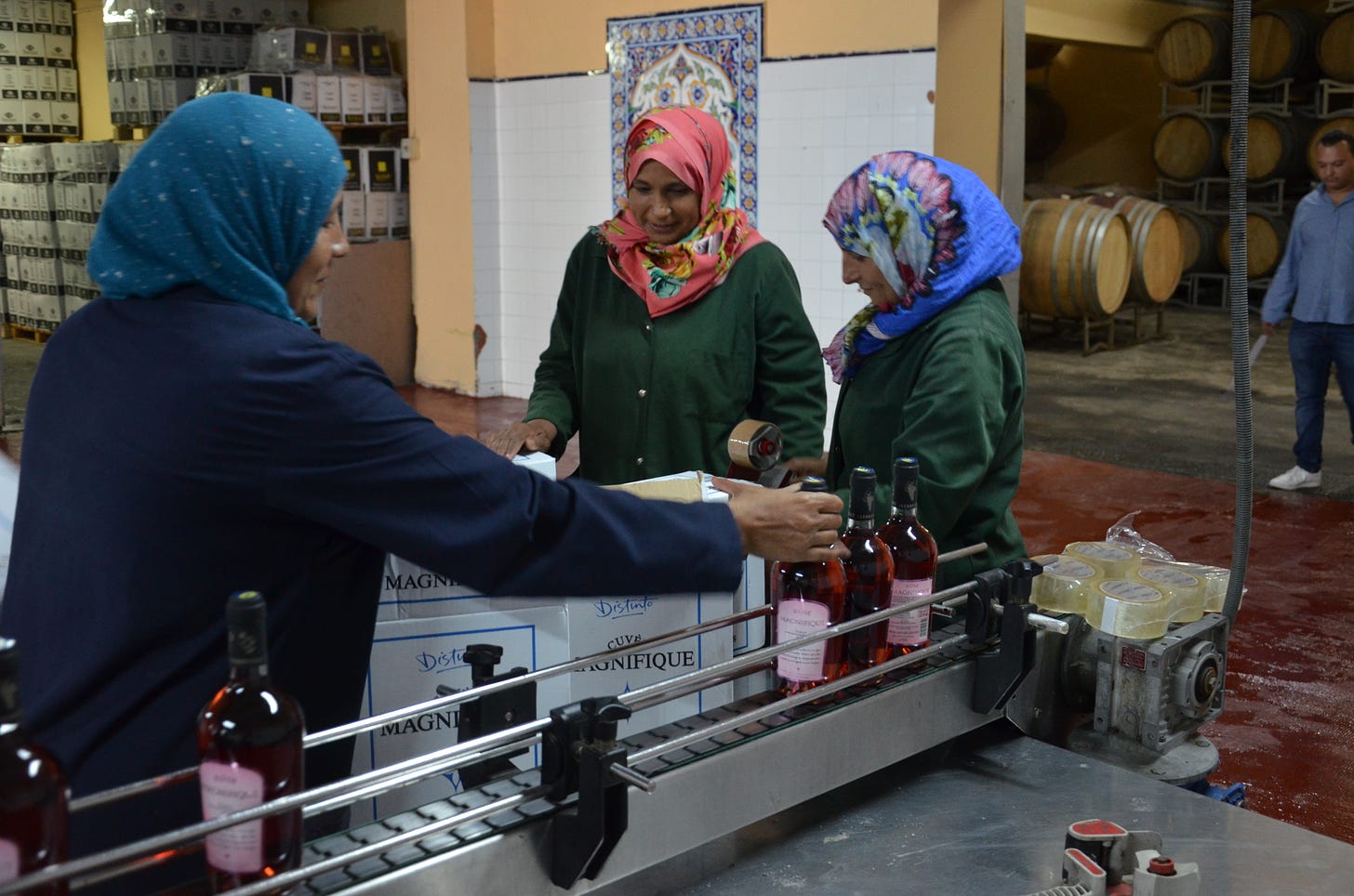
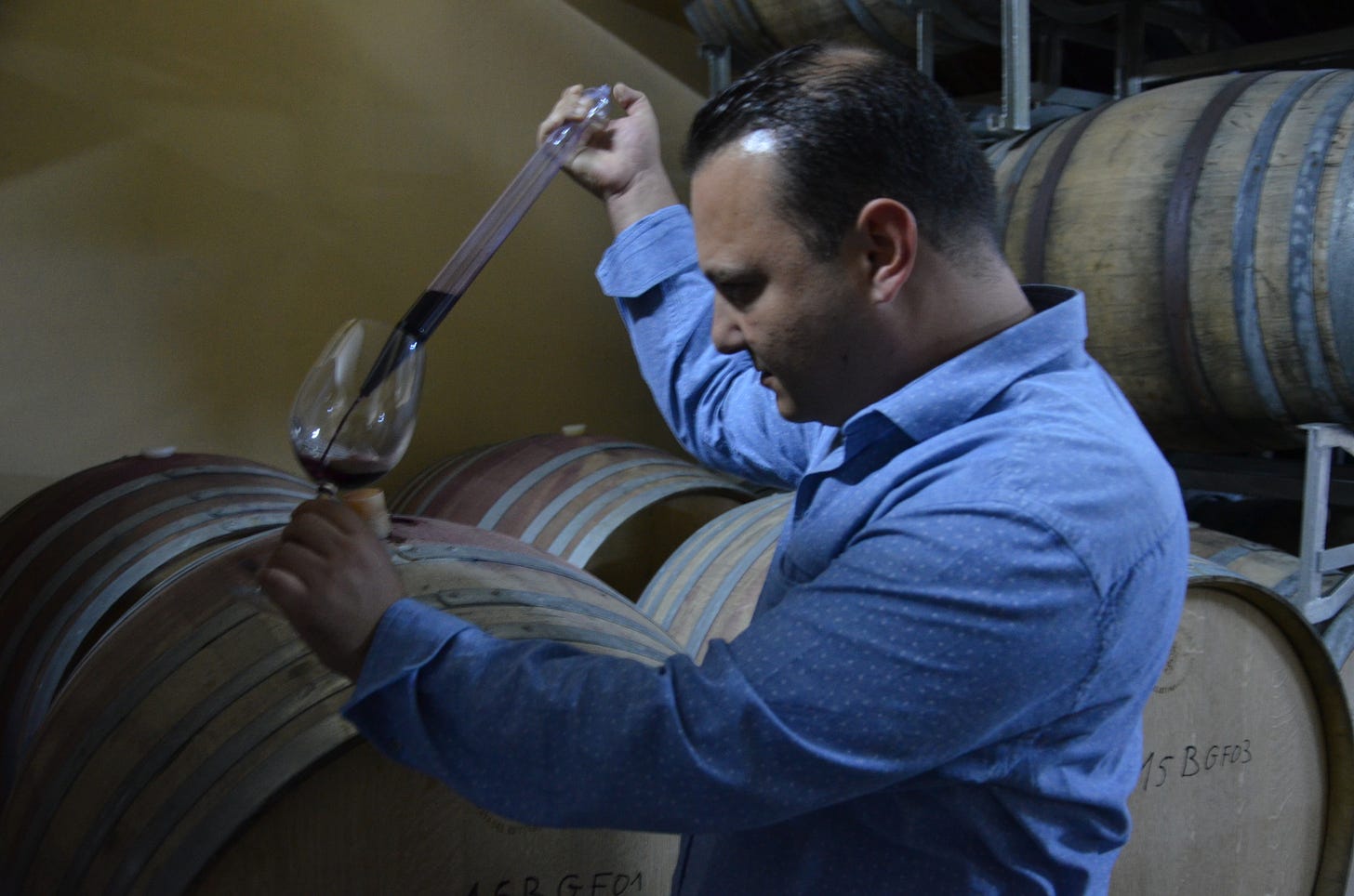
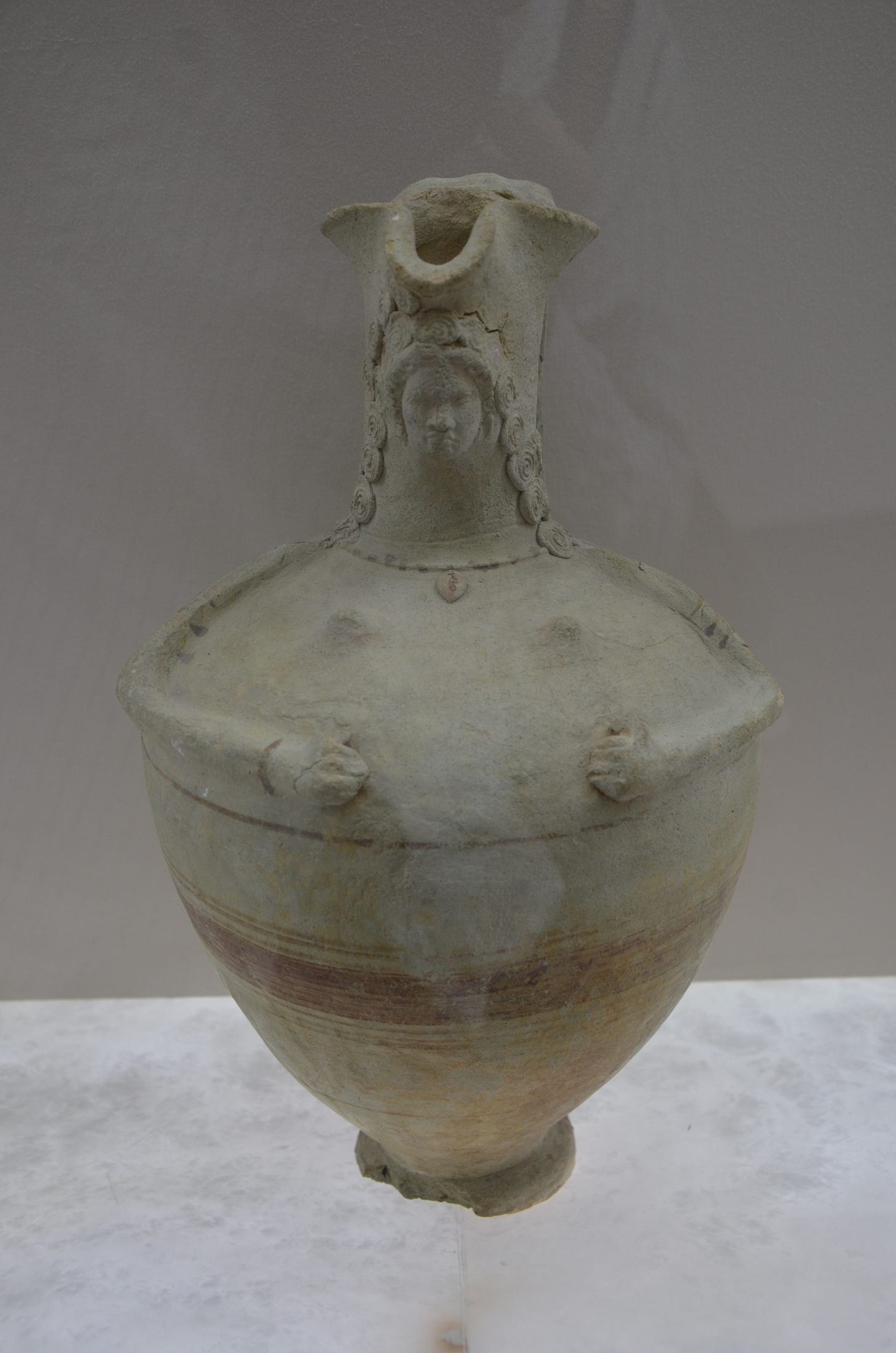
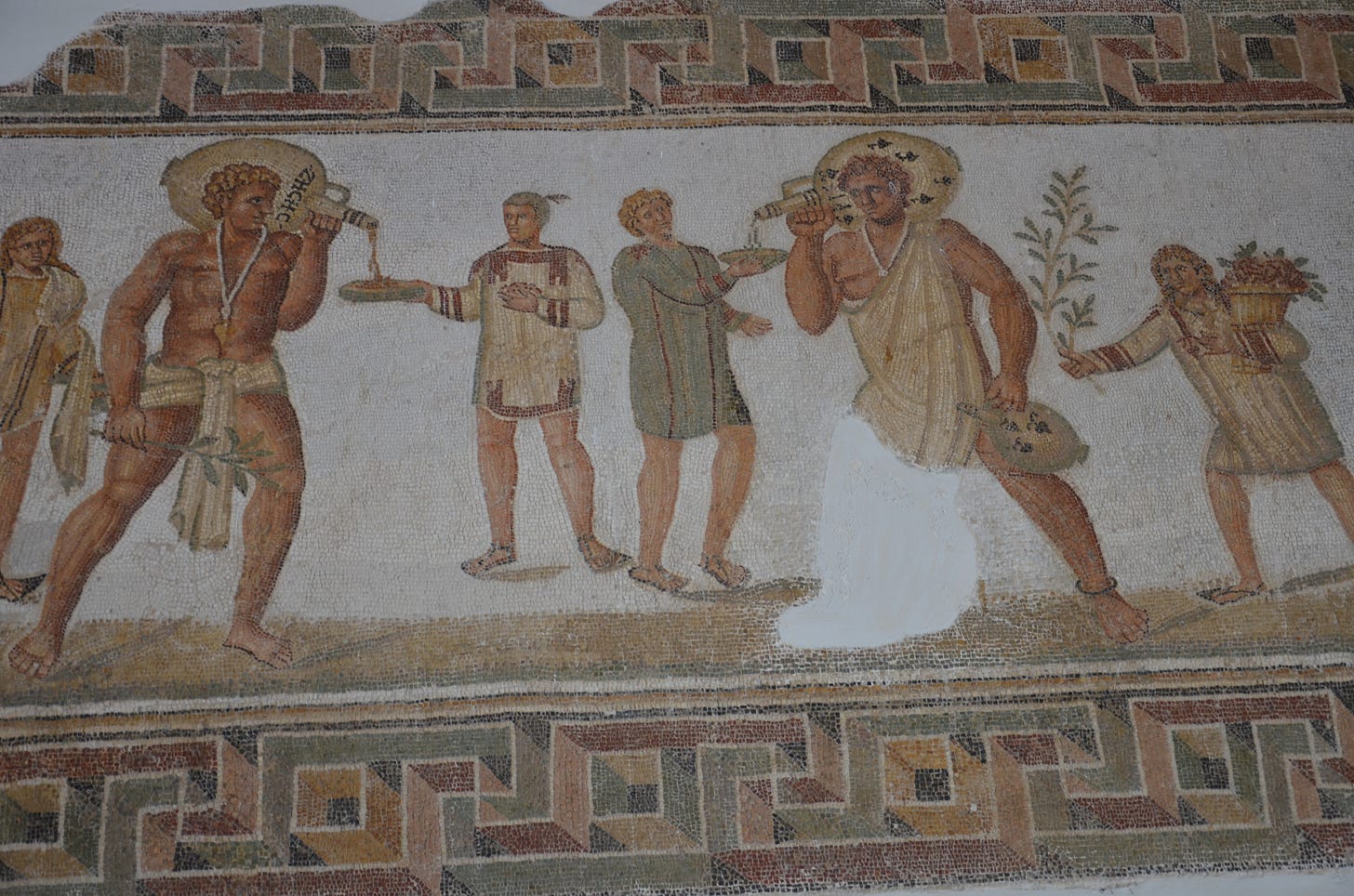
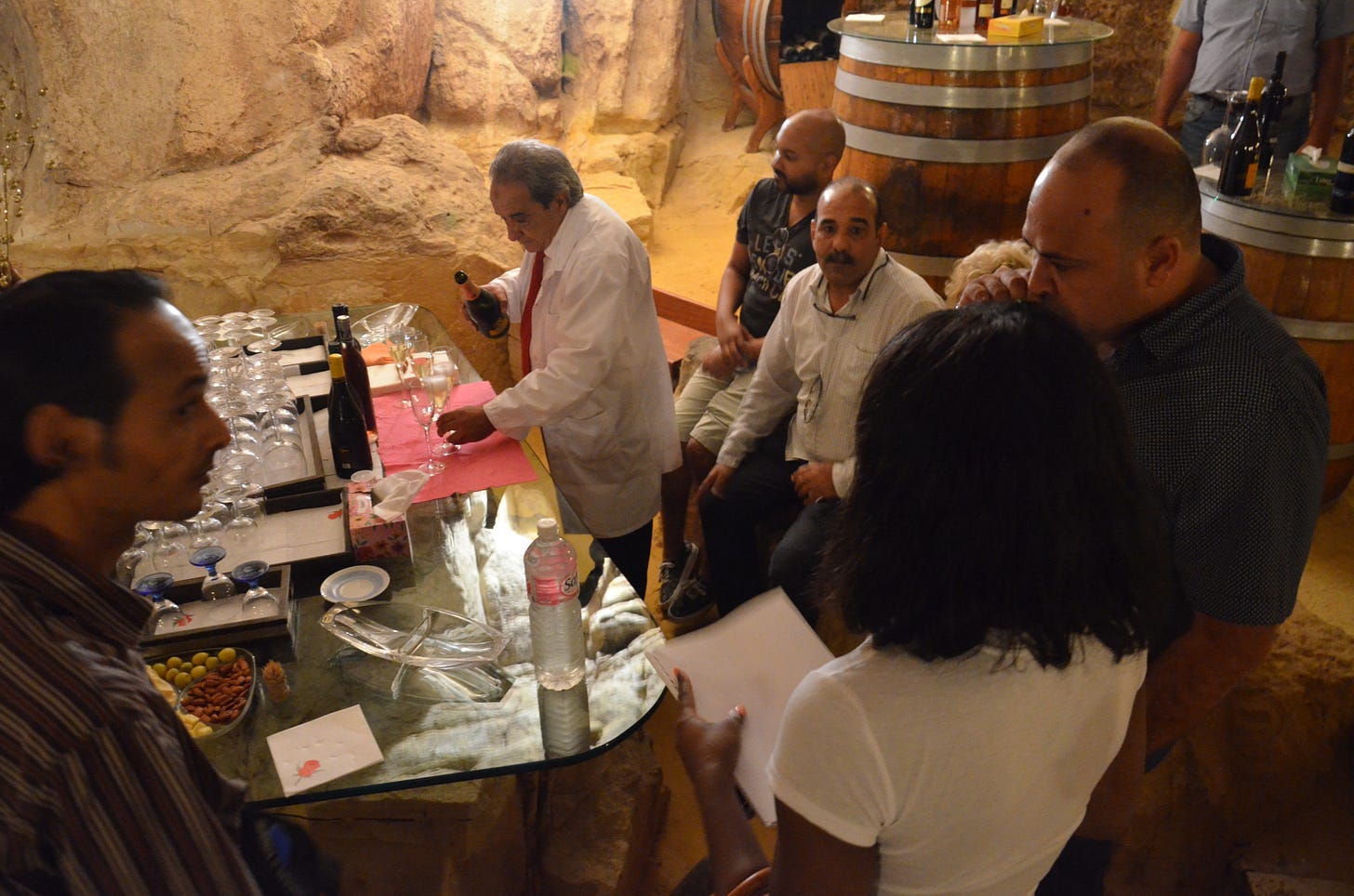

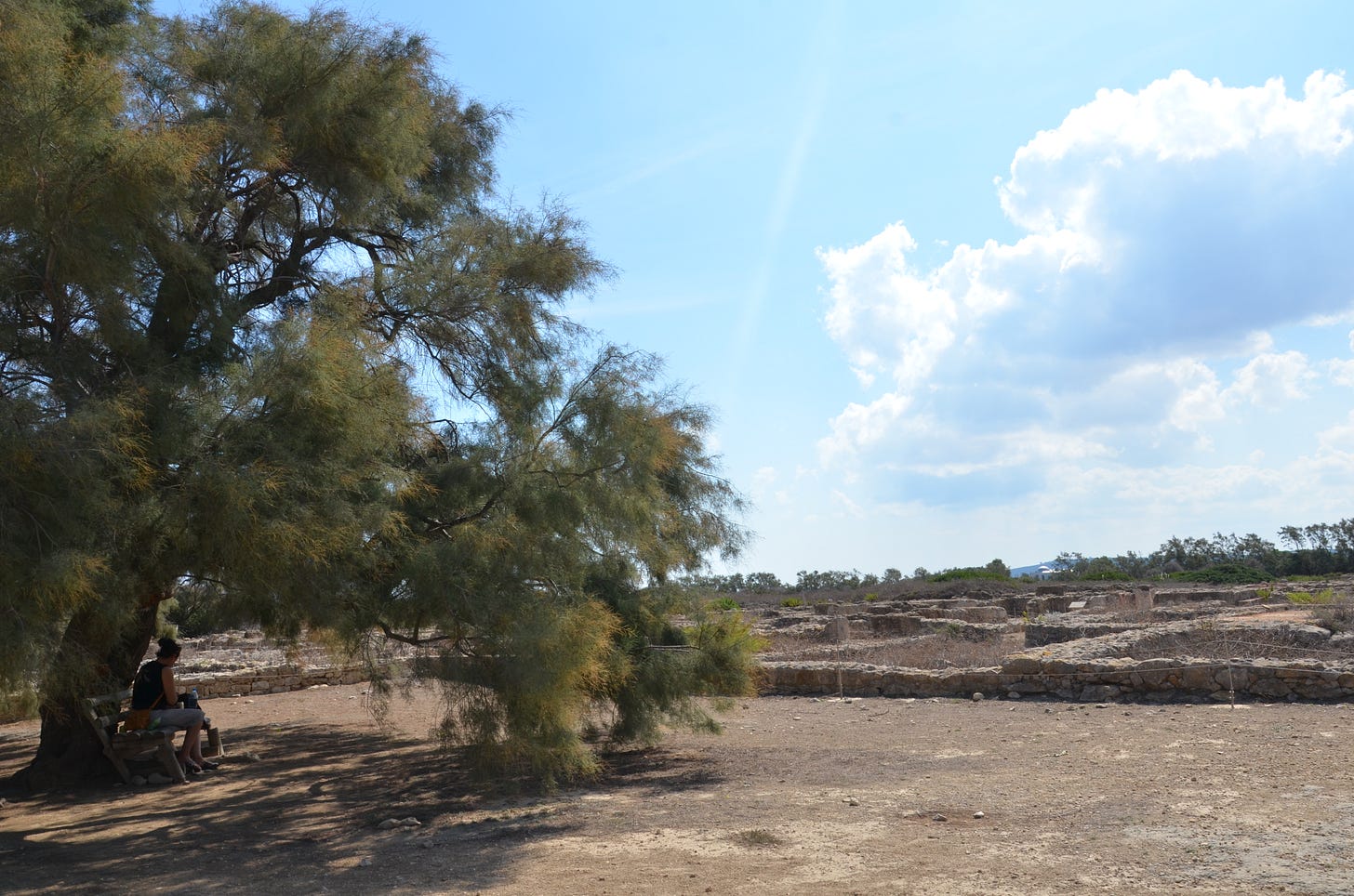
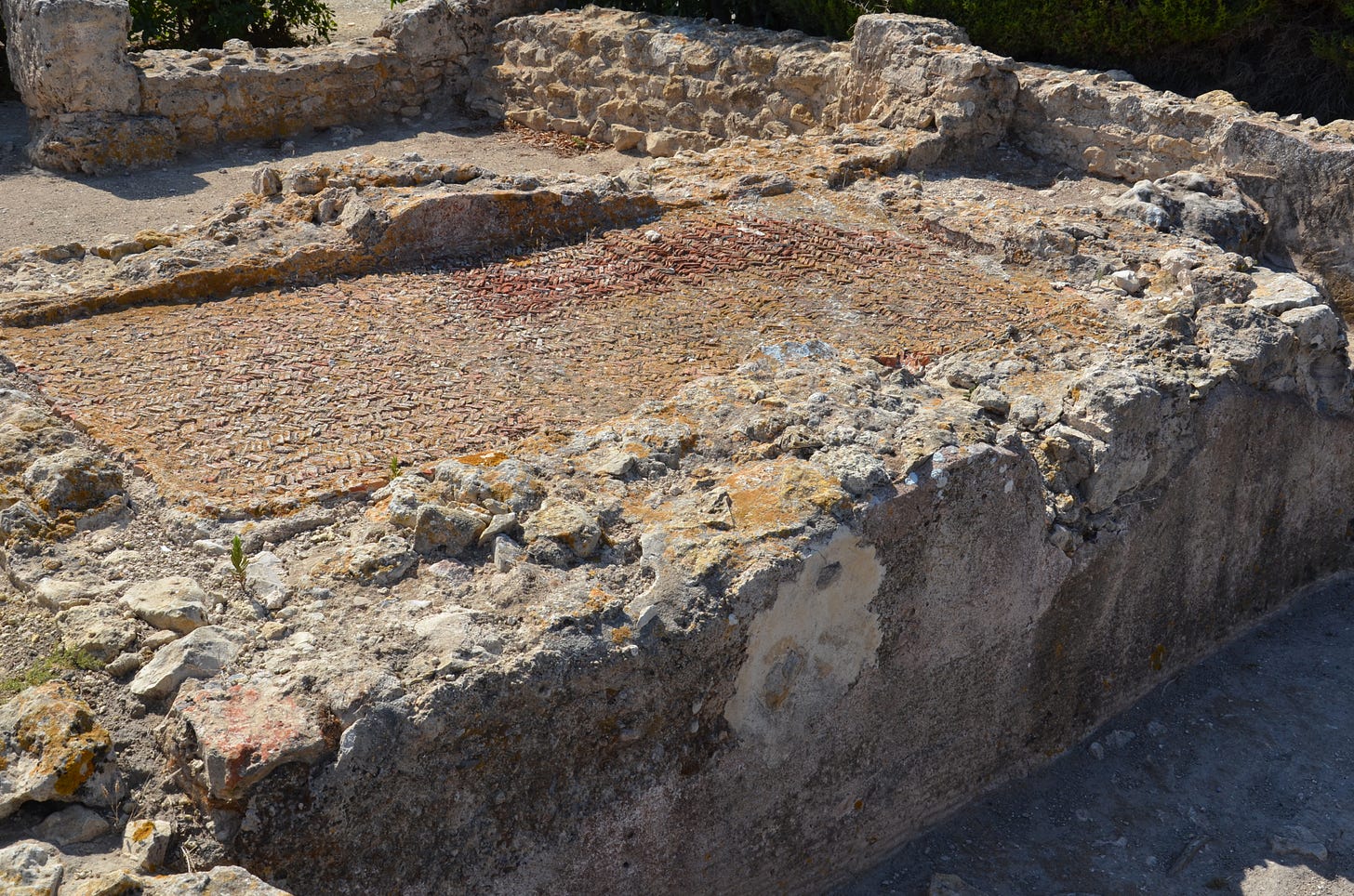
Interesting post! I wonder whether so-called Natural Wine is a thing in Tunisia.